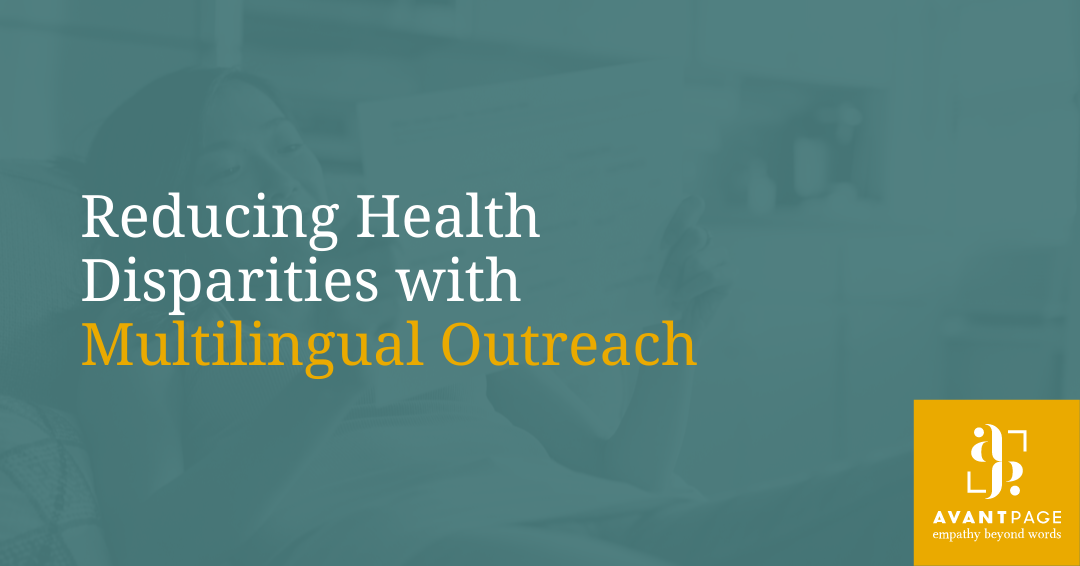To reduce disparities within social determinants of health (SDOH), everyone needs equal access to opportunities and information. And for those with Limited English Proficiency (LEP), language challenges can contribute to many SDOHs. Healthcare is one of many areas where LEP individuals may face language roadblocks.
For example, recent research pointed out that more language access to information dissemination could help to reduce healthcare inequities. The study found that communities that fell in the CDC’s social vulnerability index (SVI) were hit harder by COVID-19. The SVI measures demographic data such as English proficiency. The research showed that “counties with high populations of non-English speakers were found to have higher rates of both COVID-19 incidence and mortality.” More timely health information for LEP communities could help to reduce health inequities.
Multilingual Outreach
Yet while “having” language access is without a doubt very valuable to diverse communities, organizations need to promote that it’s available and accessible before the need arises. For example, if you’re hosting a community event, and you translate the invite, but then don’t share it in places where your audience can see it, how are LEP community members going to know about it?
Anticipating language access via outreach can lead to higher participation of diverse community members ultimately resulting in a more accurate representation of our American people. Let’s look at different levels of language assistance and ways to be proactive with multilingual outreach.
Reactive vs. Proactive Language Assistance
As a language service provider, we see various ways that companies and organizations provide language assistance.
#1 Basic Reactive: No Translations Unless Asked
They don’t translate content unless someone asks them. For example, their website and documentation are in English only, and there’s no mention that translations could be available.
#2 Reactive: No Translations, but You Can Request Them
They don’t proactively translate content, but they do offer a place where you can ask for translations. For example, they might have a page that says if you’d like to request language access or accommodations, do so here.
#3 Proactive: Translated Content
This type of company has translated content plus ways to request translations. For example, their website is localized, so a person can select the Spanish version. As a result, this audience will get a better understanding of the available services.
#4 Proactive: Translated Content with Outreach
This group has translated content, and they also spread awareness that they’re a source of information for diverse communities. For example, a company may contact a local Latin American Association to share a flyer containing information about their services or an upcoming event in Spanish.
Being Proactive Can Help Reduce Health Disparities for LEP Communities and Individuals
Having proactive translations with multilingual outreach:
- Encourages those often left out of conversations to attend, participate, and be involved, which then in turn gives an organization a more accurate and true reflection of the community.
- Positively impacts communities that are often marginalized, giving them access to the same resources and opportunities that monolingual English speakers have.
- Promotes equal opportunity for all. As a country with no official language, it’s especially important as we consider the sheer number of LEPs in the US.
- Improves quality of life. More awareness leads to more informed decision-making, affecting local communities and beyond.
